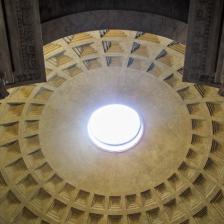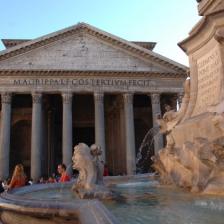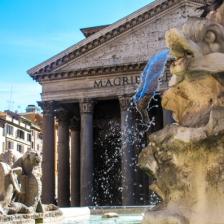
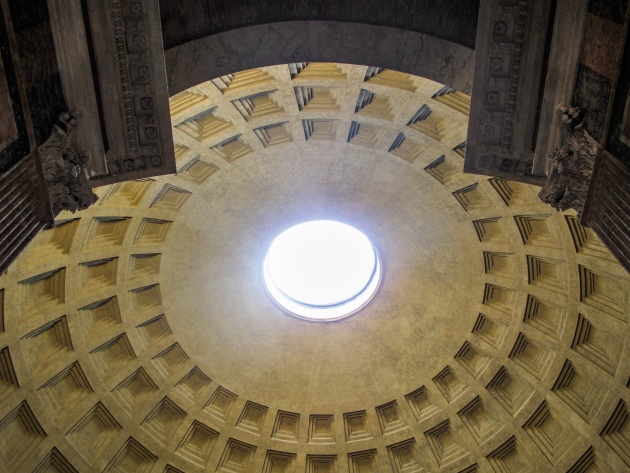
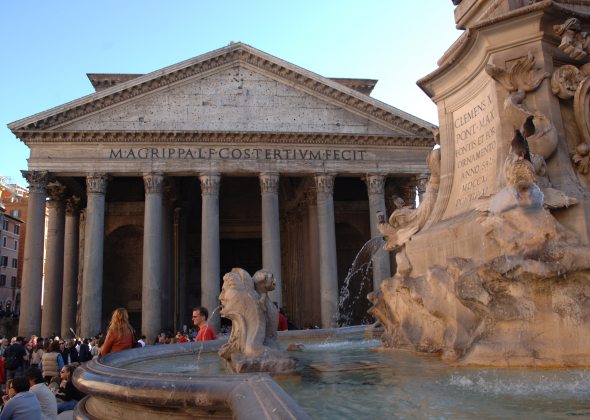
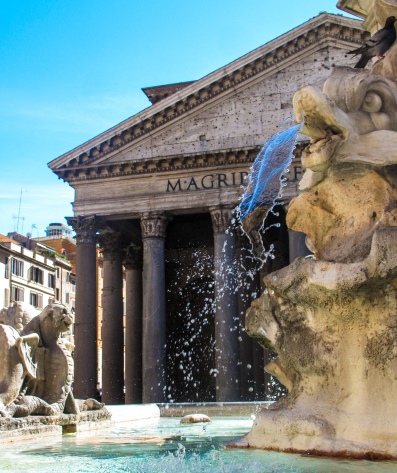
“The most beautiful relic of ancient Rome, a temple so well preserved that it appears as the Romans must have seen it in their times,” so described it the French writer Stendhal in the 19th century. A source of inspiration for the greatest architects of all ages, its beauty, the harmony of the lines and the perfect geometries have always struck people both in the past and the present.
The story of one of the best preserved examples of Roman monumental architecture begins in 27 BC, when Marcus Vipsanius Agrippa, a close friend, son-in-law, and lieutenant to Augustus, commissioned a temple in this area dedicated to “all the gods”. The present building is, however, the result of the radical reconstruction by Hadrian between 118 and 125 AD, who expanded it, reversing its orientation and opening a large square with a portico in front of the new temple.
Fallen into a state of neglect and subsequently sacked by barbarians, in 609 AD it was donated by the Byzantine emperor Phocas to Pope Boniface IV who consecrated it dedicating it to Santa Maria ad Martyres and thus preserving it from the spoliation that affected many other ancient monuments in medieval times. The Basilica houses the ancient Byzantine Icon of the Virgin and Child that Emperor Phocas donated to Pope St. Boniface IV in 609, on the occasion of the dedication of the ancient pagan temple to Christian worship.
In 1625, under the pontificate of Urban VIII Barberini, it was deprived of the bronze coatings of the portico to create the canopy of San Pietro and several cannons for the Sant’Angelo Castle. Barberini’s name was thus forever linked to a popular saying: “Quod non fecerunt barbari, fecerunt Barberini”, that is what the barbarians didn’t do, the Barberinis did for them. In the same years, two bell towers were built on the sides of the front, which the Romans called scornfully “donkey’s ears” and which were removed with the unification of Italy. In 1870 the Pantheon was turned into a memorial chapel for the kings of Italy. The tombs of Vittorio Emanuele II, Umberto I and Margherita of Savoy are to be found here together with that of famous artists including Raphael.
The building consists of a cylindrical structure preceded by a portico with Corinthian columns supporting the pediment; the original inscription with the dedication to Agrippa is preserved on the frieze. The large circular cell is surrounded by thick masonry walls and by eight large pylons on which the weight of the characteristic hemispherical concrete dome is distributed, larger than that of St. Peter's Basilica. What is most surprising about the architecture of the Pantheon is its size: the height of the building is equal to the diameter of the dome, just over 43 meters, a feature that reflects the classic canons of Roman architecture.
The dome features sunken panels, or coffer, in five rings of 28 (a number considered perfect because it is given by the sum 1+2+3+4+5+6+7). In the center opens an oculus of 8.92 meters in diameter, which is the only natural sources of light in the interior. In the summer solstice, the ray of sun that enters the large eye of the dome projects a huge luminous disk on the floor, with a diameter equal to that of the oculus. During storms, a drainage system below the floor, made of 22 drainage holes, handles the rain that falls through the oculus. Circles and squares form the unifying theme of the interior design.
On the day of Pentecost, every year, a rain of rose petals falls from the oculus at the end of the Corpus Christi celebration.
San Luigi dei Francesi (St. Louis of the French)
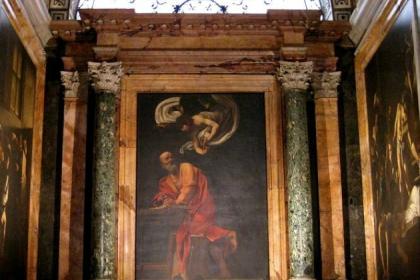
 Condividi
Condividi
Navona Square
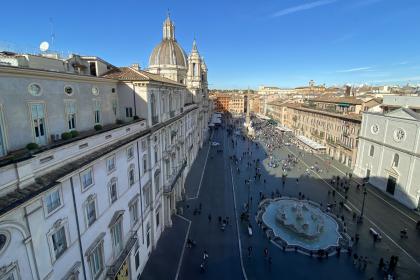
 Condividi
Condividi
The most iconic square of Baroque Rome
The Fountain of the Four Rivers

 Condividi
Condividi
Information
Daily from 9 -19 (last entry at 18.30)The ticket office closes at 18Opening hours may vary during the religious services.
 Condividi
Condividi
Locations
To find out about all accessibility services, visit the Rome accessible section.












































